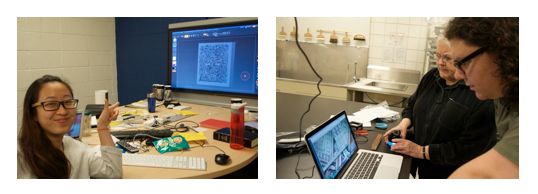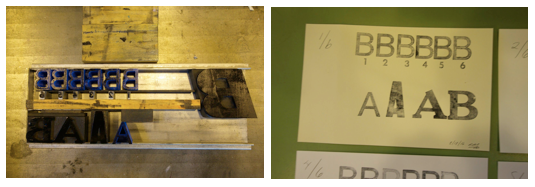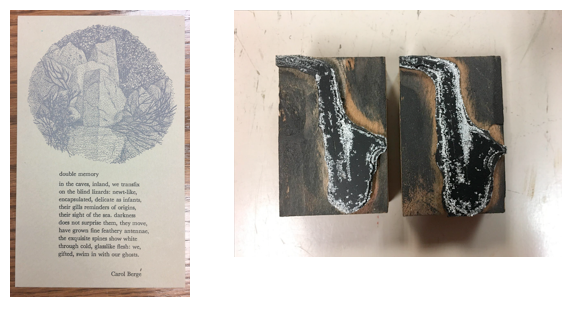L2P Project (Lead to Pixels): Dr. Rebecca M. Chung
If someone sees a book image on a screen, are they truly reading a book? If not, then how can digitization be used to transmit the material and historical features of reading? The materiality of the text connects the creation of that text to its historical moment. Historical context is as much about paper composition, assembly techniques, enclosure styles, and chemical composition—as about dates or places or names. The L2P project works on reconstructing the material characteristics of a text embedded in its historical moment—both type and ornaments, by combining book history research, digital images, and printing technologies from letterpress to electronic.
In winter 2016, L2P used Folger Shakespeare Library digital-preservation master images to reconstruct printer’s ornaments from the First Folio and Second Quarto texts of Hamlet, both as traditional copper and 3D-resin dies.
We had invaluable contributions from engineering undergraduate Jolene Ng. We used both bitmapped and SVG files, and examined results under a scope at the Buhr Conservation Lab, to see how either the file format or the resin materials might produce a different material result, compared to historic metal foundry type and metal dies produced either from digital or photolithographic image processing.

During summer 2016, L2P used the Futura type born-digital typeface from Adobe Illustrator to make a letterpress-usable font directly from a Cube 3 3D printer and PLA resin. Below are images of the test capitals, using historic wooden letterpress type as a control:

In 2017, L2P will continue to explore making letterpress type using digital-printing technologies: PrintrBots (since our Cube 3 has stopped running), Form 2 and Carvey 3D-Printing Machines at the Digital Media Commons (Duderstadt Center), and lasercutters as part of the DoIIT Makerspace Art-Design-Tech Residency Program at the School of Information (UMSI), in collaboration with biomedical/electrical engineering student Aaron Chow.

L2P will also reconstruct damaged letterpress dies from The Alternative Press studio, a historic letterpress bought in its entirety by MLibrary and now housed at the Duderstadt Center, so that artists and students can use what was originally available.

I am a book historian currently studying library preservation at the School of Information. My experience has felt like learning to fly: both powerful and—at times—unbuoyed, precipitous, or unmapped. As a Ph.D. student (English Literature, UChicago), I played to my strengths; here, I am experiencing what it means to need—and have—a deeply-supportive learning environment that allows new strength to grow. After this program, I will be a better and different teacher. As a researcher, I am grateful to explore my subject areas with new and leading-edge tools, as well as textual materiality in the digital domain.
My L2P collaborators are Fritz Swanson (Director of the Wolverine Press), and Justin Schell (Director of the Shapiro Design Lab). We rely on expertise, tools, and support across campus, which is part of the project’s ethos: thinking creatively about institutional resources and expertise to see how digitization might recover materiality in unprecedented ways.
Support and funding have also come from the UMSI Student Internship Program; MLibrary Special Collections at Hatcher Library and the Duderstadt Center, MLibrary Student Engagement Program, and the UM3DLab.